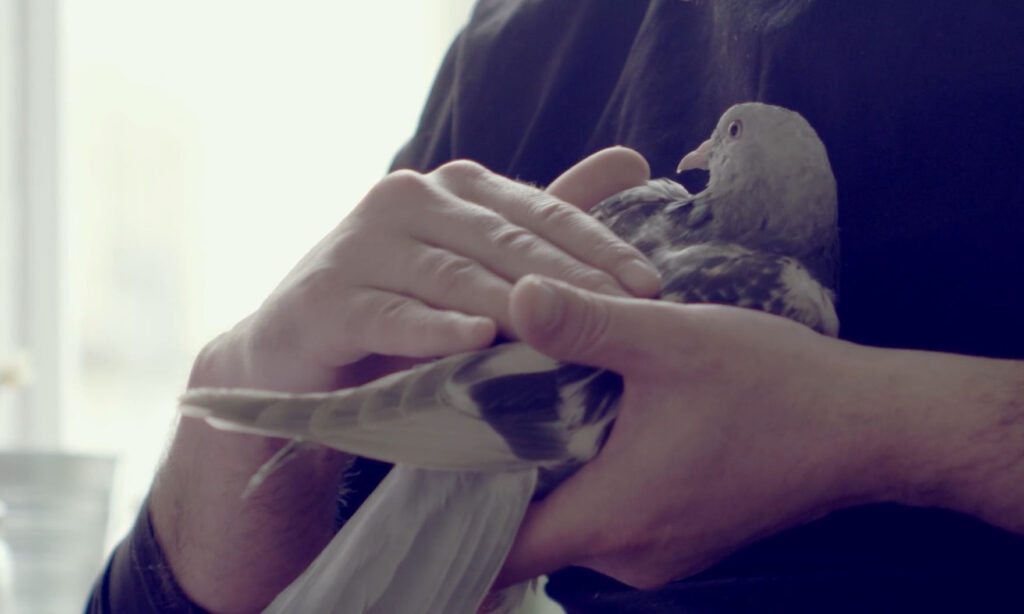Fira Filmens Födelsedag med oss 28 december

Kom och fira Filmens Födelsedag 28 dec. med oss i en kavalkad av publikfavoriter och prisbelönta filmer från Sveriges Kortfilmfestival och SM i Minutfilm 2022! Det blir 18 fina, tänkvärda, allvarliga, kärleksfulla och roliga filmer ur alla genrer. Kortaste filmen är 50 sek., den längsta 15 min. och alla har engelsk text !
Vi välkomnar alla kortfilmsentusiaster till en härlig filmstund där du även väljer din favorit och tävlar om biobiljetter.
ZITA i Stockholm 18.00-20.30 efter visningen Q&A med några av filmskaparna.
Gröna Ladan Sigtuna 11.00-13.30 före visningen samtal med filmskapare.
Öppna Kanalen RÖK kommer att göra visningar i flera av landets distrikt. Var och när läggs ut här snart.
Filmprogrammet:

Komedi – Sarah Key
De två mogna kvinnorna Gul & Röd försöker överleva det karga Norden

Anna Fabricius & Thomas Meldgaard
En liten flicka möter sin största rädsla, med Crocs på fötterna.

Animation av Anna Koppen
När en ung kvinna försöker somna, förvandlas hennes rum till den värsta mardrömmen. Hon förlorar kontrollen över vad som är upp och ner

4. CRIMEN POR AGUA / VATTENBROTT 1 min
Dokumentär av Maria Iglesias Peralta
Bonden och aktivisten Alfonso som odlar valnötter i Chile – där vattnet har privatiserats – försöker överleva den tretton år långa torkan. Han konkurrerar med stora multinationella företag kring rätten till vattnet och för sin överlevnad som bonde

Komedi av Nelly & Hanna Nilsson
Det här hände verkligen i värmländska Kil i mitten av 80-talet, och omtalas än idag av de som blev vittnen till duellen

Komedi av Hanna Bylund & Alexander Lindman
Alexander överraskar Hanna men det går inte riktigt som han tänkt sig…

Komedi av Per-Olof Wilkås
Två vänner träffas för att fiska vid Drömmarnas kaj i Göteborg

Dokumentär av Rebecka Falck
Rena Mälaren är en ideell förening med målet att plocka upp så mycket avfall som möjligt från Mälarens botten.
Det är en kamp mot klockan och ett ständigt pågående arbete. För vad händer egentligen om batterierna börjar läcka?

Animation av Hanna Järgenstedt
En perfekt dag full av ASMR och andra underbara upplevelser som man bara kan få vid medelhavet (i en perfekt värld).

Spelfilm av Mattias Silva & Piotr Marciniak
Ett tvättstugegräl mellan en medelålders svart kvinna och en ung svensk man blottlägger slitningarna i vårt samhälle

Dokumentär av Simon Revilla
När kvarlevorna av en ensam fågelskådare hittas i en förortslägenhet har han varit död i två år.
Inga anhöriga, inget testamente, inga fotografier. Genom fem fragment återskapas en livsberättelse om ensamhet, exil och fågelskådning

Spelfilm av Lisa Meyer
Lorins familj måste plötsligt flytta och hon tas från sin trygga tillvaro med vännerna i skolan, till en ödsligt belägen kyrka.
Vad är det för ny plats hon har hamnat på och finns det en väg därifrån?

Komedi av Sebastian Johansson Micci
En grundskola har blivit tilldelade tjugo lärarlönelyft. Det är nu upp till rektorn att bestämma vilka lärare som ska få lönehöjningen.
Marco, en kämpande matematiklärare, gör allt han kan för att vara i rektorns favör

Animation/Komedi av Monne Lindström
En dam blir stoppad i säkerhetskontrollen på Gatwick Airport. Hon blir stressad men gör sitt bästa för att göra som hon blir tillsagd.
En självupplevd berättelse om hur säkerhetsmaskineriet manar fram låsningar och osäkert beteende

Spelfilm av Vladimir Galdámez Garcia
Sandra söker upp sin gamla pojkvän för att erkänna en hemlighet hon har burit på i flera år.
Under mötet kommer det fram att Sandra inte är den enda som bär på en hemlighet

Spelfilm av Birk Öhrlund
August springer ifrån julmiddagen för att ringa till han som inte kunde komma i år,
de för ett samtal om hur allt är nu och minns varför det är viktigt att höra av sig

satir av Willy Fermelin
Arash vill komma in på arbetsmarknaden men det är svårare än vad han tror. När han slängs in i ett märkligt projekt,
där han får en röd hoodie för att värma sig under vinterns kallaste veckor, börjar han fundera över var han faktiskt hamnat

Spelfilm av Linda Lövgren
En dag får Lo kontakt med sin granne Lars och de blir vänner. När Lars far illa ut, måste Lo finna ett sätt att rädda sin vän
The Short Film Birthday Celebration program is about two hours long and contains 18 various shorts from all genres from the Swedish Short Film Festival and SM i Minutfilm 2022.
As usual we have a cavalcade of fun, serious, thoughtful, crazy and lovely shorts made by filmmakers
All shorts are made in a non commercial purpose and all of them have english subtitles.
We welcome all short film enthusiasts – to a nice and diverse film time where you also can vote for your favourite and compete about cinema tickets.
The Short Film Birthday Celebration is a cooperation since several years with the Swedish Film Association and LadyBug Festival.
OM Filmens Födelsedag
Den 28 december 1895 gjorde Bröderna Lumière, sin första filmvisning för allmän, betalande publik på Grand Cafe i Paris, vilket därför brukar anses som filmens födelsedag. Bröderna visade bl.a sin kortfilm 59 sek. L’Arrivée d’un train en gare de la Ciotat (Tåget ankommer Ciotats station) vilket sägs ha skapat full panik bland publiken, en del svimmade och en del rusade ut ur lokalen !

December 28, 1895, in front of a paying audience at the Grand Cafe in Paris,
the brothers Lumières staged a twenty-minute program of ten films, including one of a train as it entered a station, moving straight toward the camera. The film created panic in the audience; several women are said to have fainted. The event has gone down in history as the first public cinema performance. Within five years of the invention of the cinamatographe–during which time the Lumières promoted it throughout Europe–motion pictures were being made in every developed country in the world. The Lumières continued to innovate film technology. In Paris in 1900, they demonstrated their Photorama, which was a 360í panoramic projector. Thirty-five years later, they introduced their stereo-cine process, which was based on the principle of anaglyphics
